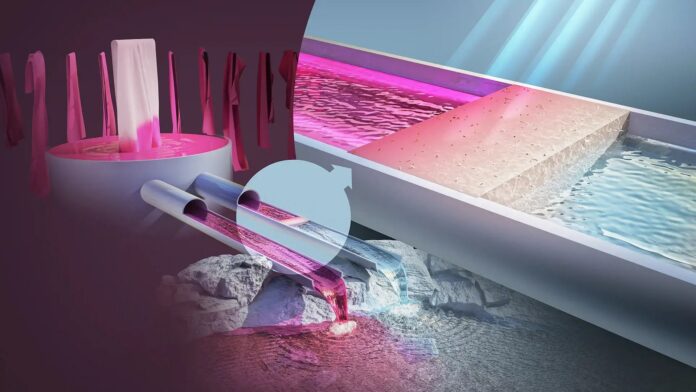Clean water is essential for health and the living environment, but over two billion people lack access. To address this global challenge, scientists at the Chalmers University of Technology have developed a new method to purify contaminated water easily.
Their method, which uses a cellulose-based material, could have implications for countries with poor water treatment technologies and combat the widespread problem of toxic dye discharge from the textile industry.
The secret to water filtration is found in the cellulose nanocrystals, about which the researchers have amassed substantial expertise. The researchers have now discovered a way to make use of the exceptional adsorption ability that these small nanoparticles have.
Gunnar Westman, Associate Professor of Organic Chemistry, said, “We have taken a unique holistic approach to these cellulose nanocrystals, examining their properties and potential applications. We have created a biobased material, a form of cellulose powder with excellent purification properties that we can adapt and modify depending on the types of pollutants to be removed.”
Scientists showed how toxic dyes can be filtered out of wastewater using the method and material developed by the group. The procedure uses sunlight as a catalyst and doesn’t involve any pressure or heat. It can remove 80 percent of dye pollutants in wastewater.
Gunnar Westman said, “Imagine a simple purification system, like a portable box connected to the sewage pipe. As the contaminated water passes through the cellulose powder filter, the pollutants are absorbed, and the sunlight entering the treatment system causes them to break down quickly and efficiently. It is a cost-effective and simple system to set up and use, and we see that it could be of great benefit in countries that currently have poor or non-existent water treatment.”
Journal Reference:
- Ruchi Aggarwal, Anjali Kumari Garg, et al. Cellulose Nanocrystals Derived from Microcrystalline Cellulose for Selective Removal of Janus Green Azo Dye. Industrial & Engineering Chemistry Research. DOI: 10.1021/acs.iecr.2c03365
